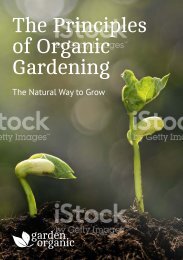The Unbreakable Rope
You also want an ePaper? Increase the reach of your titles
YUMPU automatically turns print PDFs into web optimized ePapers that Google loves.
Farah Ossouli<br />
b. 1953, Iran<br />
As a child, Farah Ossouli realised her toy dolls<br />
couldn’t act out her make-believe stories as she<br />
wished, so she began to create her own characters<br />
out of paper and card that she then decorated<br />
specifically to manifest her own fairy<br />
tales. This process of crafting her own representations<br />
of her imagination through collage,<br />
pencil and paper spawned her passion for art<br />
– a place where she could express her inner<br />
dreams in the material world. She continued<br />
to make series of new actors with whom she<br />
could play, each time throwing the old ones<br />
away, all the while developing a deep interest<br />
in literature. Fascinated by this mixture of narration<br />
and image, Farah found that painting circumscribed<br />
both loves and offered her a way<br />
to practise both passions simultaneously. Her<br />
work is, as a result, a mix of storytelling made<br />
up of characters in symbolic landscapes, interlinking<br />
with her own understanding and interpretations<br />
of life.<br />
In 1971, Farah went to study for a Diploma<br />
in Painting at the Girl’s School of Fine Arts in<br />
Tehran, before completing a Bachelor of Arts<br />
in Graphic Design at the Faculty of Fine Arts at<br />
the University of Tehran in 1977. Her bold use<br />
of colour and form inflected with symbolism<br />
in her oeuvre reflects her academic roots in<br />
graphics and painting.<br />
Farah’s work can be found in many important<br />
collections, including the Los Angeles<br />
County Museum of Art and the Metropolitan<br />
Museum of Art, both in the USA; the Devi Art<br />
Foundation in India; the Koran Museum in<br />
Iran; the Tropen Museum in the Netherlands;<br />
and the Ludwig Museum in Germany. She is<br />
a member of the Society of Iranian Painters<br />
and the female Iranian artists group, DENA.<br />
Farah was awarded a prize at “Ayeneh dar<br />
Ayeneh” in Tehran in 1997 and won the<br />
2000 Renowned Iranian Women Award, the<br />
2002 Iranian Women Artists Prize and the<br />
2002 Prize at the second Biennial of Islamic<br />
Contemporary Painting in Tehran. She has sat<br />
on several boards and jury panels over the<br />
last two decades, including recently acting<br />
as head of the jury of the Visual Art Festival<br />
at Mellat Gallery in Tehran from 2010–12.<br />
Farah was a member of the jury and selection<br />
committee of the First International Fajr<br />
Festival of Visual Arts at the Tehran Museum<br />
of Contemporary Art, Iran in 2009, a curator<br />
of the Iranian Art Festival Qanat Al Qasba<br />
at Sharjah, UAE in 2008, chairperson of the<br />
exhibition Representation of Persian Painting<br />
in Iran-Imam Ali Arts Museum in 2007 and a<br />
member of the selection committee of the Sixth<br />
Biennial of Persian Painting in 2006. She regularly<br />
exhibits in both group and solo shows<br />
across the globe.<br />
For <strong>The</strong> unbreakable rope, Farah is exhibiting<br />
two works, both called Untitled, from<br />
her Hafiz series, inspired by poetry of the<br />
Sufi mystic (circa 1325 to 1389) who wrote<br />
paeans to earthly pleasures and disavowed<br />
religious hypocrisy. Depicting a pair of lovers<br />
embracing under a flock of birds, the first<br />
work Untitled comes from a Hafiz poem translating<br />
to ‘<strong>The</strong> day of travel and night of separation<br />
love ended. I predicted this, the star<br />
passed, and everything came to an end.’ <strong>The</strong><br />
second Untitled shows a couple serenading<br />
each other. ‘I am dying with anticipation/<br />
dying from eagerness, but there is no way<br />
out through the curtain. Or if there is a way<br />
out, the guard/keeper of the curtain will not<br />
show it to me.’ Rife with romantic pathos, the<br />
verses evoke love as a force transcending natural<br />
boundaries. Farah employs intricate textures<br />
and patterns highly reminiscent of Islamic<br />
art traditions, through extremely delicate and<br />
controlled brushwork. <strong>The</strong> figures are tenderly<br />
set in a history of Persian iconography and<br />
heritage, alluding to a magical splendour<br />
begotten by love.<br />
Untitled<br />
Gouache on cardboard<br />
75 x 60 cm<br />
2003-2005<br />
Untitled<br />
Gouache on cardboard<br />
75 x 55 cm<br />
2003-2006



